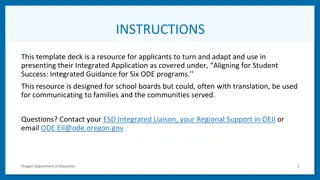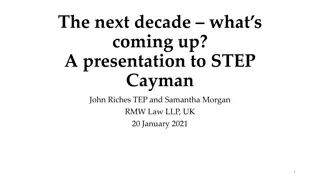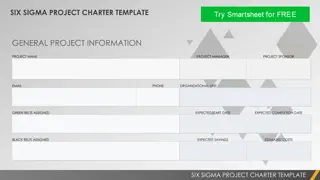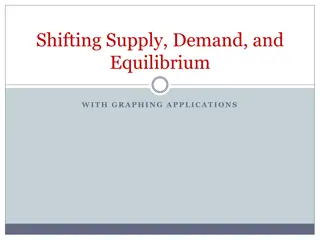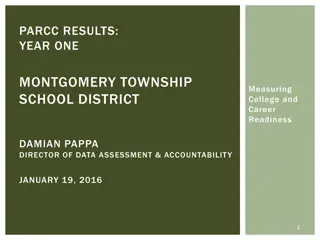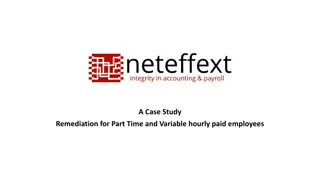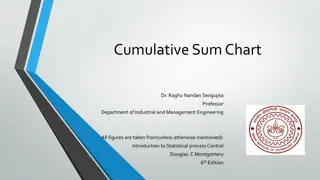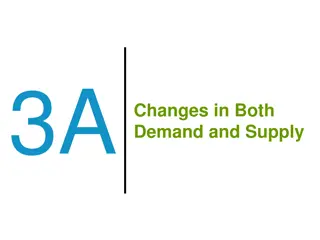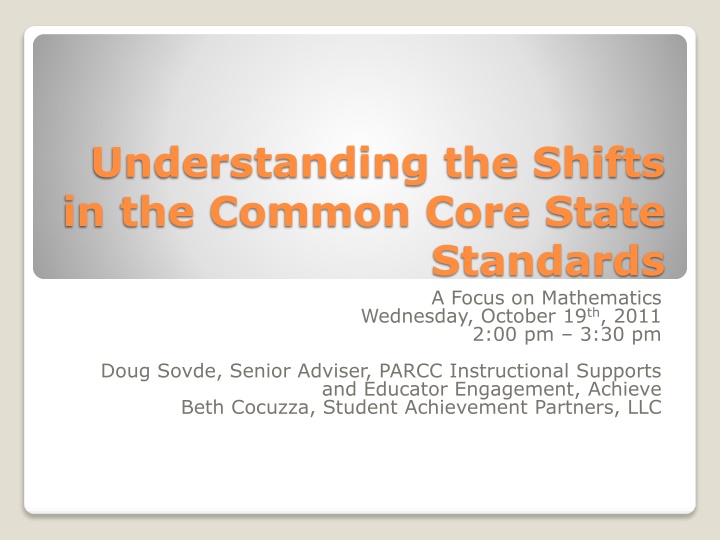
Understanding the Shifts in Common Core State Standards Mathematics
This article explores the six shifts in mathematics education focusing on Common Core State Standards. It discusses the importance of narrowing the scope and deepening content, coherence of learning across grades, and the significance of focus for student understanding. The traditional U.S. approach to math curriculum is compared with the updated standards that emphasize foundational knowledge, conceptual understanding, and skill transfer. Key domains and major concerns in math education are also highlighted.
Download Presentation

Please find below an Image/Link to download the presentation.
The content on the website is provided AS IS for your information and personal use only. It may not be sold, licensed, or shared on other websites without obtaining consent from the author. If you encounter any issues during the download, it is possible that the publisher has removed the file from their server.
You are allowed to download the files provided on this website for personal or commercial use, subject to the condition that they are used lawfully. All files are the property of their respective owners.
The content on the website is provided AS IS for your information and personal use only. It may not be sold, licensed, or shared on other websites without obtaining consent from the author.
E N D
Presentation Transcript
Understanding the Shifts in the Common Core State Standards A Focus on Mathematics Wednesday, October 19th, 2011 2:00 pm 3:30 pm Doug Sovde, Senior Adviser, PARCC Instructional Supports and Educator Engagement, Achieve Beth Cocuzza, Student Achievement Partners, LLC
Shift One: Focus Shift Two: Coherence Shift Three: Deep Understanding Shift Four: Fluency Shift Five: Application Shift Six: Intensity The Six Shifts in Mathematics
Significantly narrow and deepen the scope and content of how time and energy is spent in the math classroom Focus deeply on only the concepts that are prioritized in the standards so that students reach strong foundational knowledge and deep conceptual understanding Students are able to transfer mathematical skills and understanding across concepts and grades Shift One: Focus
Carefully connect the learning within and across grades so that students can build new understanding onto foundations built in previous years. Begin to count on deep conceptual understanding of core content and build on it. Each standard is not a new event, but an extension of previous learning. Shift Two: Coherence
The current U.S. curriculum is a mile wide and an inch deep. Focus allows each student to think, practice, and integrate each new idea into a growing knowledge structure. The Importance of Focus
Traditional U.S. Approach K 12 Number and Operations Measurement and Geometry Algebra and Functions Statistics and Probability
Domain Grades Major Work/Major Concerns (not a complete list) Counting and Cardinality K Know number names and the count sequence Count to tell the number of objects Compare numbers Operations and Algebraic Thinking K-5 Concrete use of the basic operations (word problems) Mathematical meaning and formal properties of the basic operations Prepare students to work with expressions and equations in middle school Number and Operations Base Ten K-5 Place value understanding Develop base-ten algorithms using place value and properties of operations Computation competencies (fluency, estimation) CCSS K-8 Domain Structure Number and Operations Fractions 3-5 Enlarge concept of number beyond whole numbers, to include fractions Use understanding of basic operations to extend arithmetic to fractions Lay groundwork for solving equations in middle school The Number System 6-8 Build concepts of positive and negative numbers Work with the rational numbers as a system governed by properties of operations Begin work with irrational numbers Expressions and Equations 6-8 Understand expressions as objects (not as instructions to compute) Transform expressions using properties of operations Solve linear equations Use variables and equations as techniques to solve word problems Ratios and Proportional Relationships 6-7 Consolidate multiplicative reasoning Lay groundwork for functions in Grade 8 Solve a wide variety of problems with ratios, rates, percents Functions 8 Extend and formalize understanding of quantitative relationships from Grades 3-7 Lay groundwork for work with functions in High School Emphasize the common nature of all measurement as iterating by a unit Build understanding of linear spacing of numbers and support learning of the number line Develop geometric measures Work with data to prepare for Statistics and Probability in middle school Measurement and Data K-5 Geometry K-8 Ascend through progressively higher levels of logical reasoning about shapes Reason spatially with shapes, leading to logical reasoning about transformations Connect geometry to number, operations, and measurement via notion of partitioning Statistics and Probability 6-8 Introduce concepts of central tendency, variability, and distribution Connect randomness with statistical inference Lay foundations for High School Statistics and Probability
Expressions and Equations Operations and Algebraic Thinking Number and Operations Base Ten Algebra The Number System Number and Operations Fractions K 1 2 3 4 5 6 7 8 High School Focusing attention within Number and Operations
Coherence provides the opportunity to make connections between mathematical ideas. Coherence occurs both within a grade and across grades. Coherence is necessary because mathematics instruction is not just a checklist of topics to cover, but a set of interrelated and powerful ideas. The Importance of Coherence
Making connections at a single grade Multiplication and Division Properties of Operations Area Coherence example: Grade 3
The coherence and sequential nature of mathematics dictate the foundational skills that are necessary for the learning of algebra. The most important foundational skill not presently developed appears to be proficiency with fractions (including decimals, percents, and negative fractions). The teaching of fractions must be acknowledged as critically important and improved before an increase in student achievement in algebra can be expected. Final Report of the National Mathematics Advisory Panel (2008, p. 18) Coherence example: Progression across grades
Content Emphases by Cluster Grade Four
Teach more than how to get the answer and instead support students ability to access concepts from a number of perspectives Students are able to see math as more than a set of mnemonics or discrete procedures Students demonstrate deep conceptual understanding of core math concepts by applying them to new situations Shift Three: Deep Understanding
Students are expected to have speed and accuracy with simple calculations Teachers structure class time and/or homework time for students to practice core functions such as single-digit multiplication so that they are more able to understand and manipulate more complex concepts Shift Four: Fluency
Grade Required Fluency K Add/subtract within 5 1 Add/subtract within 10 Add/subtract within 20 2 Add/subtract within 100 Multiply/divide within 100 3 Add/subtract within 1000 4 Add/subtract within 1,000,000 5 Multi-digit multiplication Multi-digit division 6 Multi-digit decimal operations 7 Solve px + q = r, p(x + q) = r Required Fluencies
Use math and choose the appropriate concept for application even when not prompted to do so Provide opportunities at all grade levels for students to apply math concepts in real world situations Teachers in content areas outside of math, particularly science, ensure that students are using math at all grade levels to make meaning of and access content Shift Five: Application
The standards call equally for conceptual understanding, procedural skill and fluency, and application of mathematics. Meeting these standards requires intensity in the classroom. Practice is intense: fluency is built and assessed through timed exercises. Solitary thinking and classroom discussion are intense, centered on thought-provoking problems that build conceptual understanding. Applications are challenging and meaningful. The amount of time and energy spent practicing and understanding learning environments is driven by the specific mathematical concept and therefore, varies throughout the given school year. Shift Six: Intensity
Place Value Standards Progression Seeing the Six Shifts Fractions Standards Progression Seeing the Six Shifts The Shifts in Action Two Examples
Place Value Problems for Deep Understanding
Place Value Standards Progression Seeing the Six Shifts Fractions Standards Progression Seeing the Six Shifts The Shifts in Action Two Examples
Example: Fractions 4.NF
Fractions Problems for Deep Understanding

